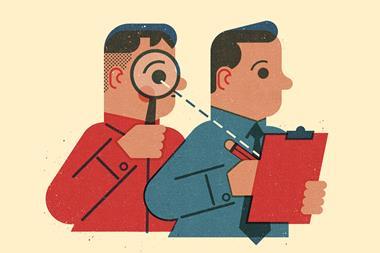Nina Hall is not amused.
During May, the Saturday edition of The Guardian newspaper published a series of three, weekly 32-page supplements called Chemical world which purported to educate its readers in just how dangerous the chemicals in our daily lives are and how to cut them out.
Here’s a flavour of the advice given. We were told to take off our shoes entering the home so we don’t tread chemicals all over the house, to avoid baby wipes because they contain antifreeze, and not to use chemicals when there is a feasible natural alternative. For example, we should use sodium bicarbonate for cleaning (made, of course, by that well-known natural route, the Solvay process). We should also replace our bedsheets, get rid of carpets, and not use natural gas because these products all contain chemicals. Well, at least The Guardian editors got that one right. These kinds of statements would be funny if they didn’t betray the frightening ignorance of the fluffy-headed journalists responsible, who clearly know less chemistry than my cat.
The articles in first issue covered Health and beauty - written in that style associated with certain women’s magazines, which manages to combine factual vagueness and popular opinion with unassailable certainty - and that set the standard for the intellectual level of discussion for the other two issues on Food and drink, and Home and garden. The information given was a mishmash of alarming half-truths, misunderstood science, sloppy research and un-analytical interpretation, all wrapped up in muddled prose littered with misspelt terms in such a way as to terrify the socially concerned but probably (alas) chemically illiterate reader.
The articles contained so many examples of confused thinking that it’s hard to pick just a few. Apparently, in the house we breathe in ’a heady mixture of pesticides, flame retardants, solvents and mites by the lung-full everyday’. No ppms are actually given, of course. ’Water-based paints are almost solvent-free’, we’re told, so that’s all right then. Natural, traditional paints are apparently a good idea, so let’s get out the lead, cadmium and arsenic. Borax is apparently a ’natural element’. And the most bizarre statement of all was in the food section: ’Water has no harmful reactions but it is not necessarily the first ingredient you would expect to find in lasagne ready-meal’. Well, I suppose water is a solvent and we had already learnt from the DIY section that all solvents are bad. I’ll stop before your solvent-based haemoglobin undergoes a liquid-gas phase transition.
Of course, the two obvious misrepresentations don’t need explaining to chemists: everything is made of chemicals and ’natural’ does not mean ’good’. Every organic chemist knows that the most toxic chemicals around are made by living organisms, particularly bacteria. Not only do these compounds have bizarre chemical structures and unpredictable properties, but their progenitors continually produce new variations.
So why does an otherwise respectable broadsheet, which supposedly targets the thinking middle classes, print this incoherent rubbish? I don’t know, but it’s clear that the Royal Society of Chemistry and science writers like me aren’t doing our jobs. Those of us committed to understanding and explaining how the world works and our place in it must devote more effort to education and public understanding of the molecular sciences, if we are to prevent the mass media wasting further valuable paper and ink chemicals on this kind of dangerous drivel.
Nina Hall once worked in the cosmetic industry so knows a bit about what goes in face cream. She has been a science writer for a quarter of a century.












No comments yet